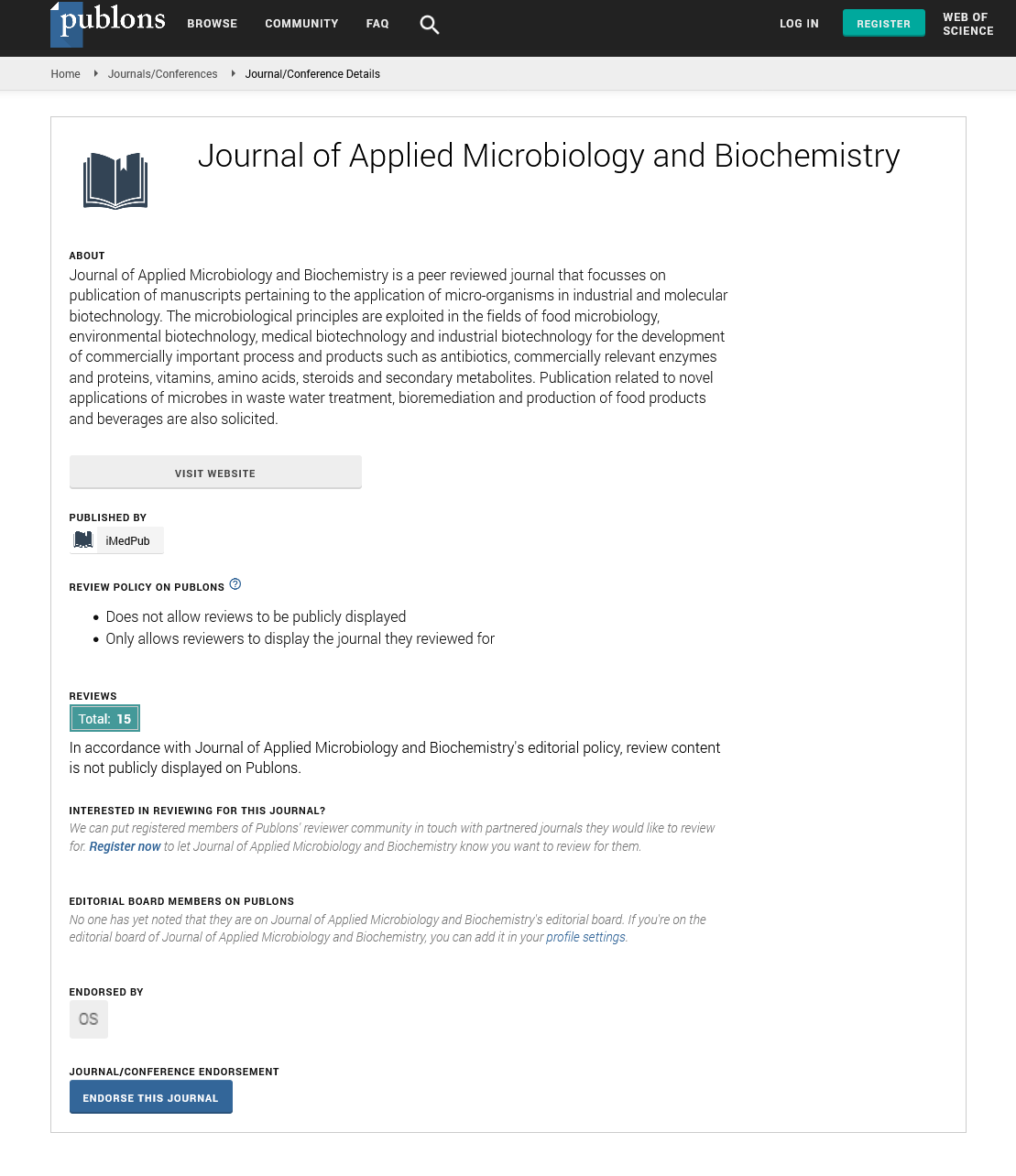ISSN : ISSN: 2576-1412
Journal of Applied Microbiology and Biochemistry
Abstract
Multiple Antibiotic Resistance, Antibiogram and Phenotypic Detection of Metallo-Beta-Lactamase (MBL) from Escherichia coli of Poultry Origin
Background: Bacteria produce antibiotic-degrading enzymes such as carbapenemases. Carbapenemases are a consortium of carbapenem-hydrolyzing enzymes such as metallo-β-lactamase (MBL) that gives Gram-negative bacteria the exceptional ability to degrade and render the carbapenems inefficacious.
Aim: This study evaluated the antibiogram, multiple antibiotic resistance and occurrence of MBL-producing E. coli from cloacal swabs of poultry birds in a local poultry farm in Abakaliki, Nigeria.
Materials and methods: A total of 40 cloacal swab samples from the cloacal region of poultry birds were bacteriologically analyzed for the isolation of E. coli. E. coli isolates were identified using standard microbiology techniques and the antibiogram of the isolates was determined using the disk diffusion technique. The multidrug resistance nature of the E. coli isolates was determined using multiple antibiotics resistance index (MARI) protocol while MBL production was phenotypically confirmed using the inhibition based assay.
Results: A total of 29 (72.5%) E. coli isolates was recovered from the 40 cloacal swab samples. The E. coli isolates were highly resistant to imipenem (31%), meropenem (58.6%), ertapenem (75.9%), cefotaxime (55.2%), ciprofloxacin (89.7%), cefoxitin (93.1%). and ceftazidime (69.0%). MBL production was phenotypically detected in 3 (10.3%) E. coli isolates out of the 29 isolates of E. coli recovered in this study. The resistant E. coli isolates were multiply resistant to antibiotics in the class of fluoroquinolones, cephalosporins, aminoglycosides and carbapenems; and they had a multiple antibiotic resistance of 0.4 on average.
Conclusion: This presumptive study has shown that E. coli isolates of poultry origin produce MBL. The emergence and spread of drug resistant bacteria in the community can be contained if we use antibiotics rationally and find alternative measures for promoting animal growth without the use of antimicrobial agents.
Author(s): Ejikeugwu Chika, Iroha Ifeanyichukwu, Amaechi Clement O, Ugwu Malachy, Eze Peter, Iroha Chidinma S, Ogene Lilian and Orinya Chinedu
Abstract | Full-Text | PDF
Share This Article
Google Scholar citation report
Citations : 342
Journal of Applied Microbiology and Biochemistry received 342 citations as per Google Scholar report
Journal of Applied Microbiology and Biochemistry peer review process verified at publons
Abstracted/Indexed in
- Google Scholar
- China National Knowledge Infrastructure (CNKI)
- Cosmos IF
- Directory of Research Journal Indexing (DRJI)
- Publons
- Secret Search Engine Labs
Open Access Journals
- Aquaculture & Veterinary Science
- Chemistry & Chemical Sciences
- Clinical Sciences
- Engineering
- General Science
- Genetics & Molecular Biology
- Health Care & Nursing
- Immunology & Microbiology
- Materials Science
- Mathematics & Physics
- Medical Sciences
- Neurology & Psychiatry
- Oncology & Cancer Science
- Pharmaceutical Sciences
